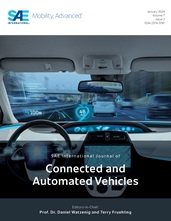Leveraging Triggering Conditions for Efficient Scenario-Based Testing of Automated Vehicles
- Features
- Content
- Scenario-based testing has become a central approach of safety verification and validation (V&V) of automated driving. The standard ISO 21448: Safety of the intended functionality (SOTIF) [1] proposes triggering conditions (e.g., an occluded traffic sign) as a new aspect to be considered to organize scenario-based testing. In this contribution, we discuss the requirements and the strategy of testing triggering conditions in an iterative, SOTIF-oriented V&V process. Accordingly, we illustrate a method for generating test scenarios for evaluating potential triggering conditions. We apply the proposed method in a two-fold case study: We demonstrate how to derive test scenarios and test these with a virtual automated driving system in simulation. We provide an analysis of the testing result to show how triggering condition-based testing facilitates spotting the weakness of the system. Besides, we exhibit the applicability of the method based on multiple triggering conditions and nominal scenarios from an industrial context.
- Pages
- 13
- Citation
- Zhu, Z., Philipp, R., and Howar, F., "Leveraging Triggering Conditions for Efficient Scenario-Based Testing of Automated Vehicles," SAE Int. J. CAV 8(4), 2025, https://doi.org/10.4271/12-08-04-0035.
